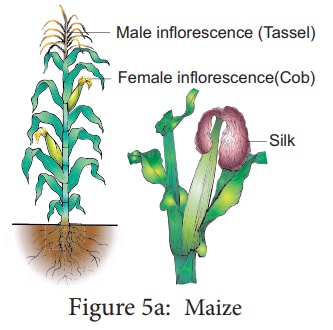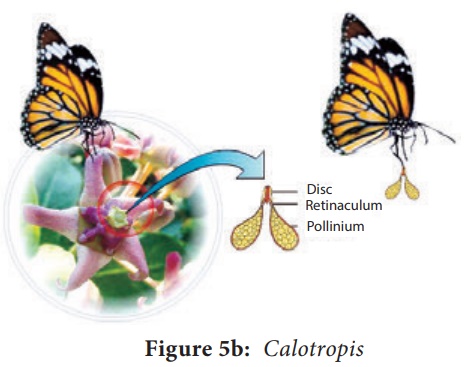Fresh or Preserved Specimens - Botany Practicals - Adaptations of flowers for pollination by different agents | 12th Botany : Practicals
Chapter: 12th Botany : Practicals
Adaptations of flowers for pollination by different agents
Fresh or preserved specimens
Exercise : Adaptations of flowers for pollination by
different agents.
Aim: To study the adaptations
in flowers for pollination by different agents (wind and insects)
Principle: The process of transfer
of pollen grains from the anther to stigma of a flower is called pollination.
Requirements: Fresh flowers of maize
or any other cereal / gram, any insect pollination flowers like Salvia,
Calotropis, Ocimum and Asteraceae flowers.
Place
the given flower on a slide and observe it with the help of hand lens. Note
down the adaptations of the flowers meant for pollination by the external agents.
A. Wind Pollinated Flowers - Anemophily
Diagnostic Features
·
The flowers are small, inconspicuous, colourless, odourless and
nectarless.
·
Anthers and stigmas are commonly exerted.
·
Pollen grains are light, small, powdery and produced in large
numbers.
·
The stigmas are large, sometimes feathery and branched adapted to
catch the pollens.

B. Insect Pollinated Flowers - Entemophily
Diagnostic Features
·
The flowers are showy, brightly coloured and scented.
·
The flowers produce nectar or edible pollen.
·
Anthers and stigmas are commonly inserted.
·
Stigmas are usually unbranched and flat or lobed.

Related Topics